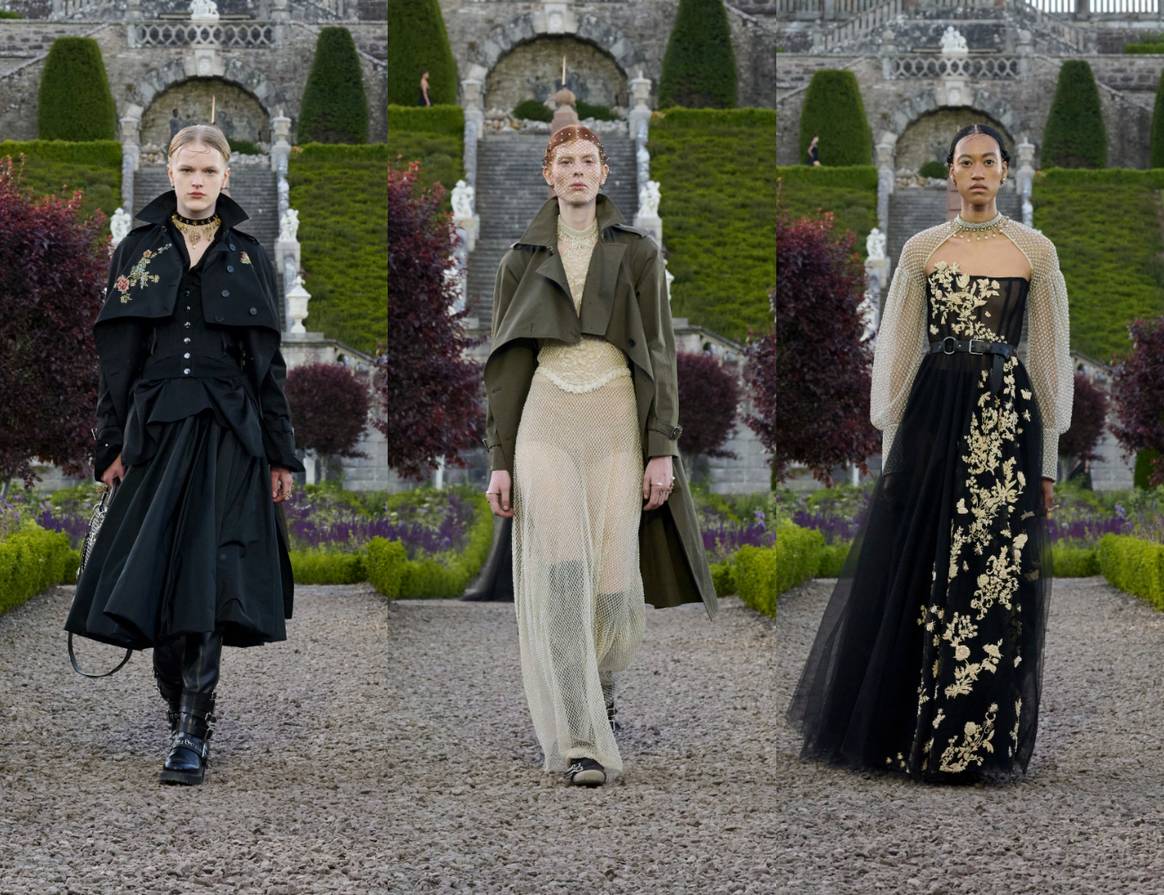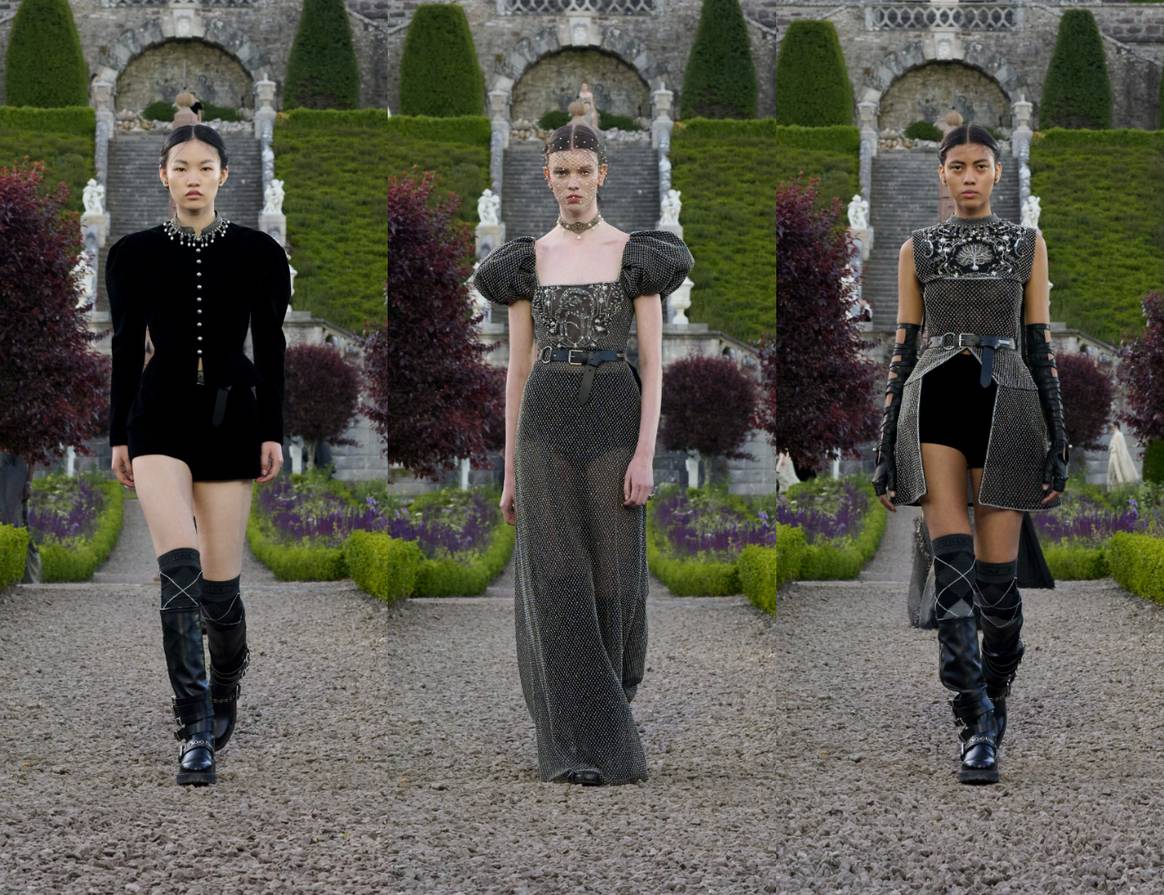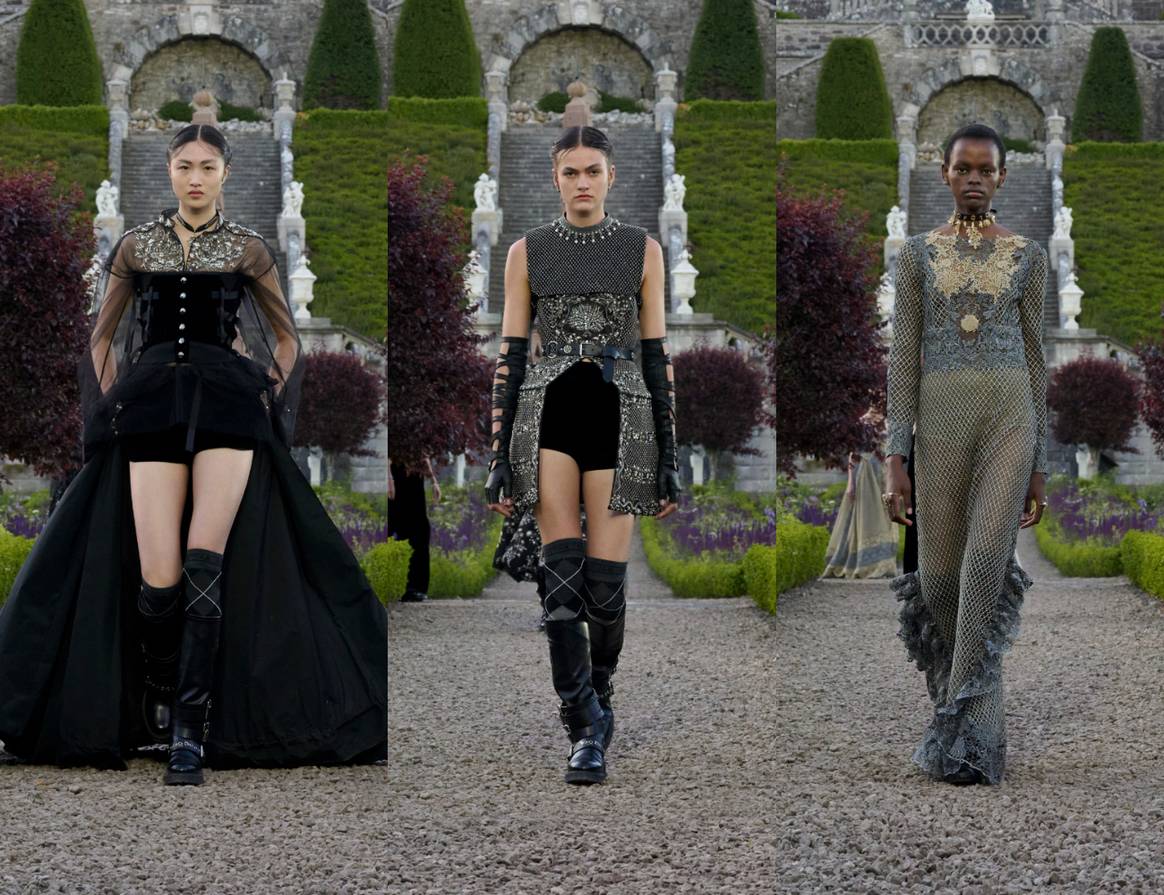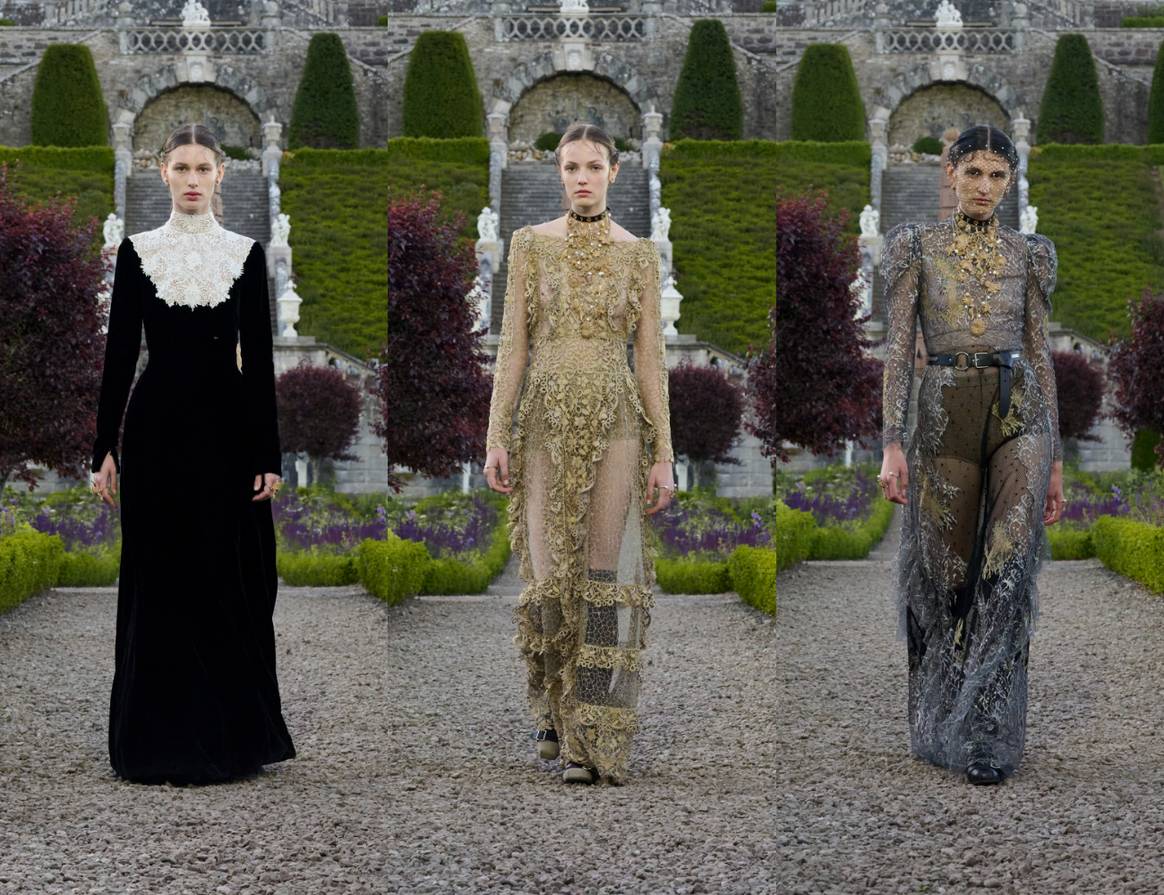Creative director Maria Grazia Chiuri continued Dior’s journey around the world unveiling the brand’s latest Cruise collection among the gardens of Drummond Castle in Scotland. So far, the French luxury brand has held shows in Mexico City, where the collection honoured famed artist Frida Kahlo; Seville, with the encapsulation of the spirit of flamenco; and Athens, where a sporty take on couture craftsmanship reflected the history of the show’s venue, the Panathenaic Stadium.
Each spectacle builds on Chiuri’s ongoing exploration of Christian Dior’s own history, a concept that ultimately resumed in Scotland, where the iconic French designer once also presented his work back in 1955. For Chiuri, however, the setting now became a part of the narrative for her Cruise 2025 collection, in which tokens of the country had been infused with Dior’s own perpetual signatures.
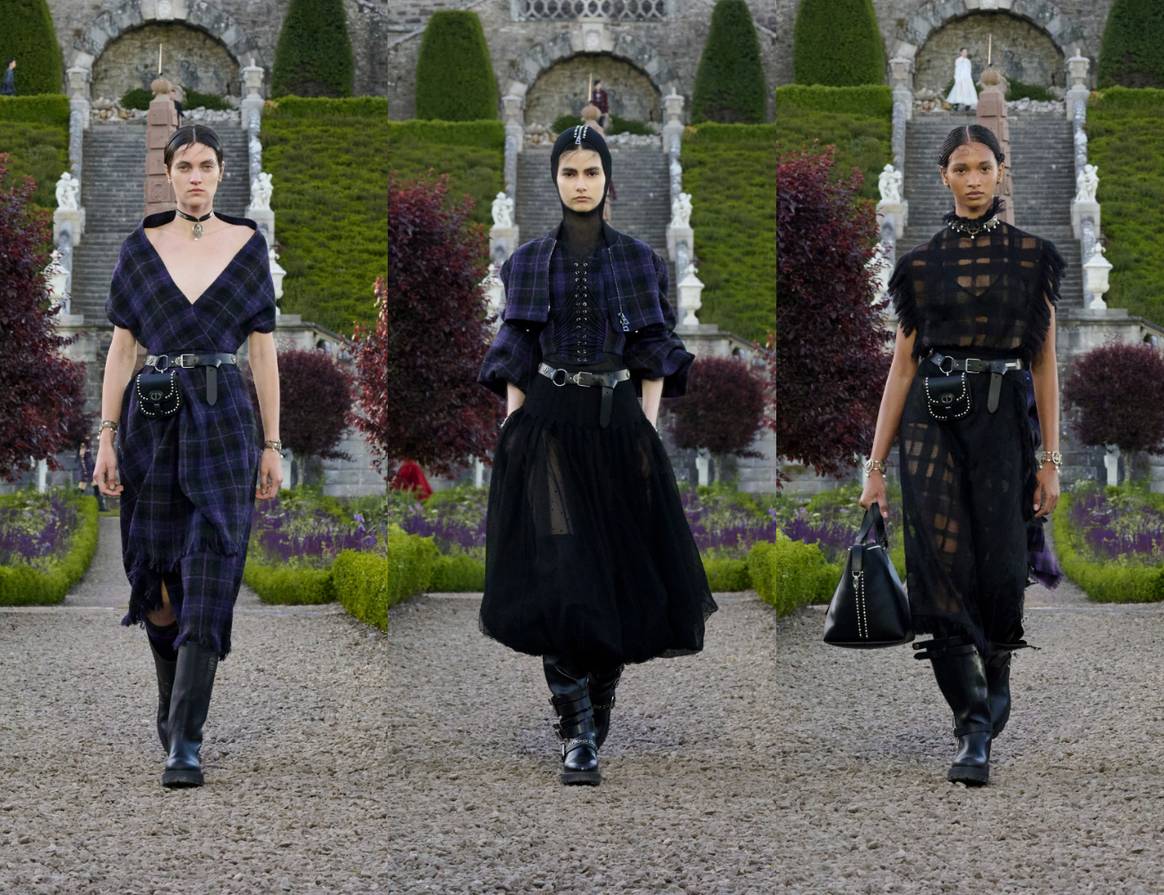
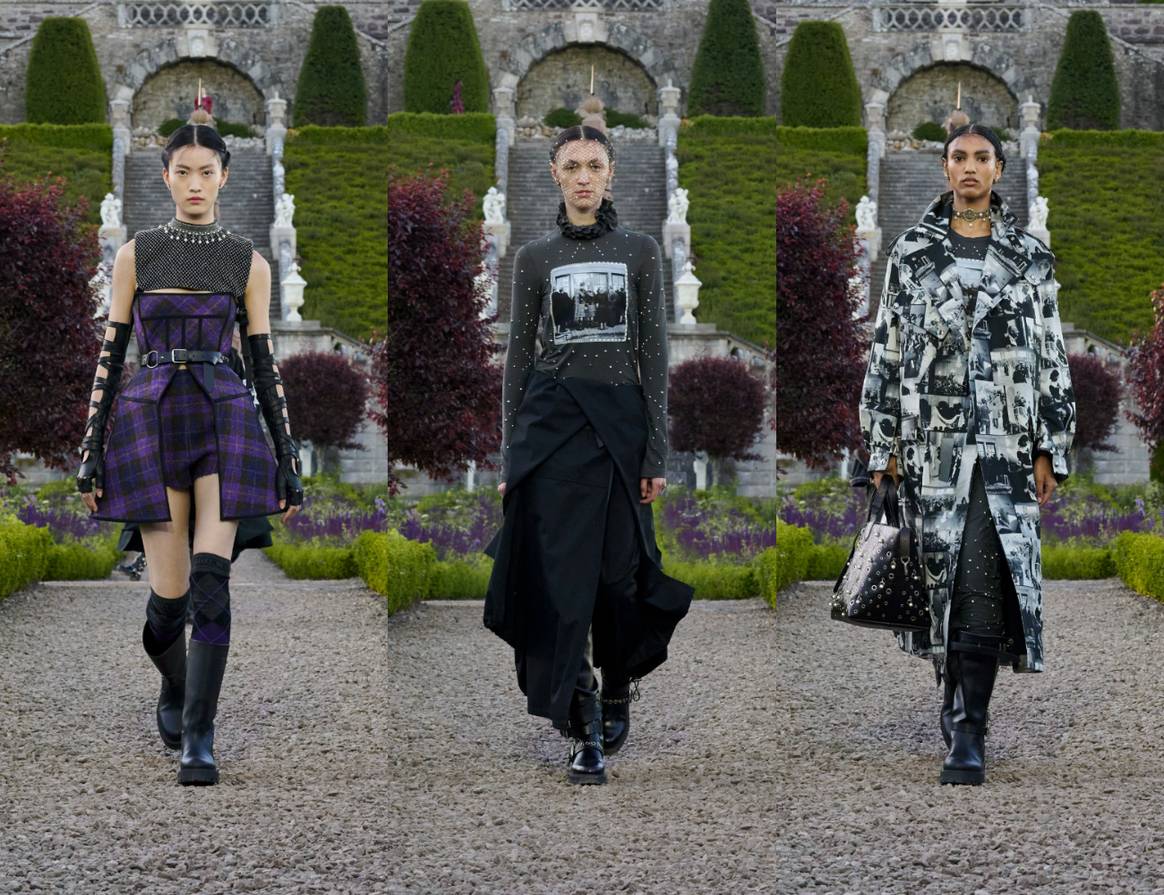
As such, the history of both Scotland and Dior were unearthed in tandem, through recognisable references in shape, embroidery, print and craftsmanship. One of such features was the pronounced presence of tartan, a pattern that is intrinsically linked to Scotland’s past and present and a style that Dior, himself, once said was “probably the only fancy fabric that resists fashions”. For her own designs, Chiuri blends all the historic aesthetics that tartan has found itself among, crossing into everything from romanticism to punk in what sees the pattern become the core of much of the collection.
Tartan’s journey in fashion, from romanticism to punk
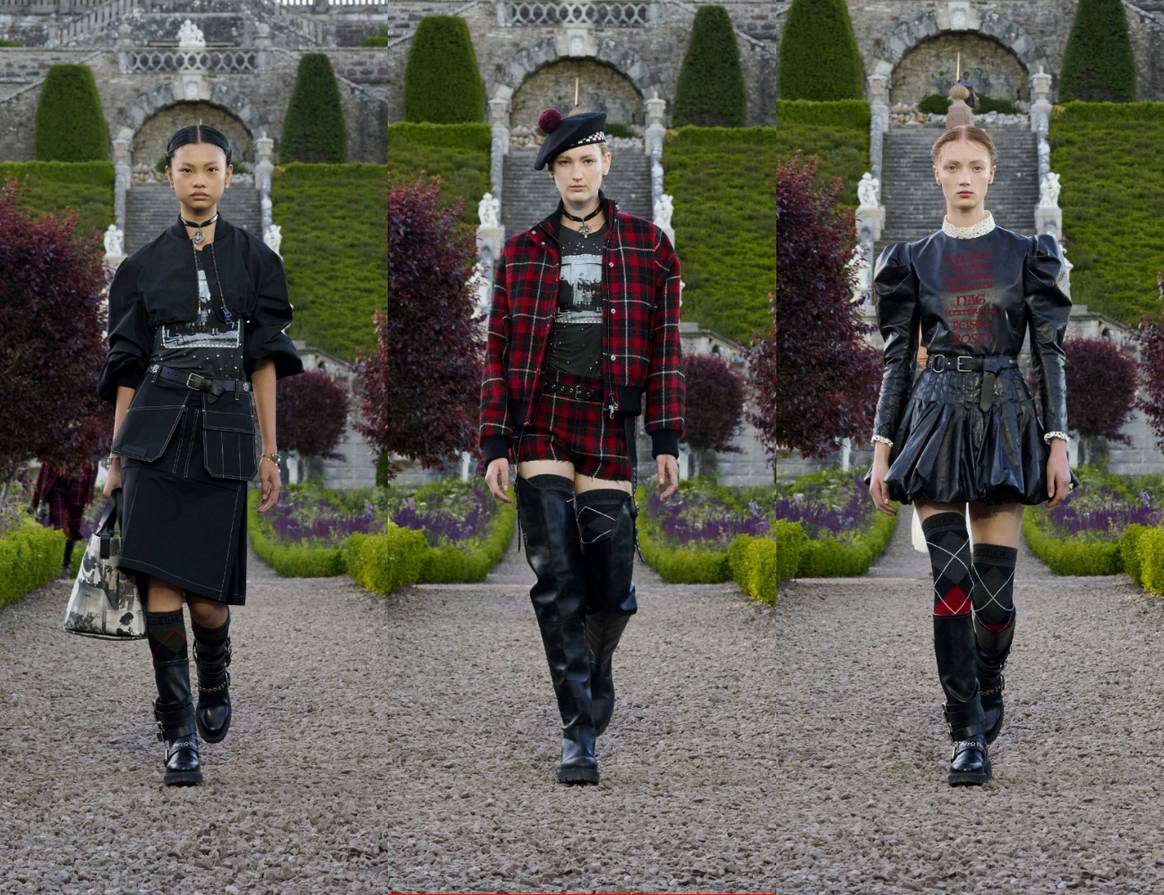
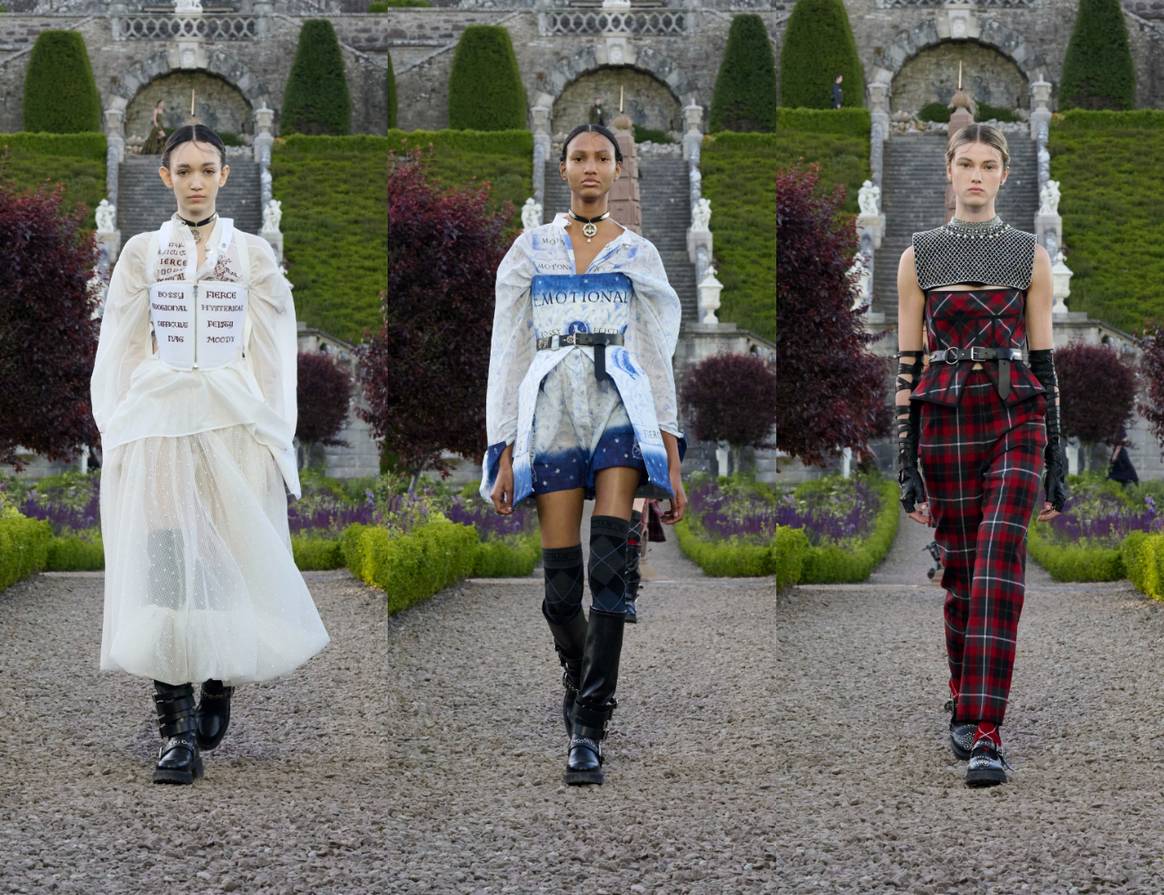
Other references to Scotland come in the form of symbols like the unicorn and the thistle, which are interlaced with the Millefleurs motif in what the brand describes as an “unprecedented variation”. Dior goes on to say that the resulting “heraldic embroidery” honours “a form of resilience”, a title it had garnered when it became an emblem of Mary Stuart, as referenced in Clare Hunter’s book ‘Embroidering Her Truth: Mary, Queen of Scots and the Language of Power’.
The history of Dior, meanwhile, is quite literally ingrained into the fibres of some of the pieces. Imagery from the brand’s SS55 presentation have been transformed into prints or appear in appliques that form the basis of skirts, pea coats and blouses, alike, presenting “a kind of cinematic montage” against the backdrop of 14th century inspired garb.
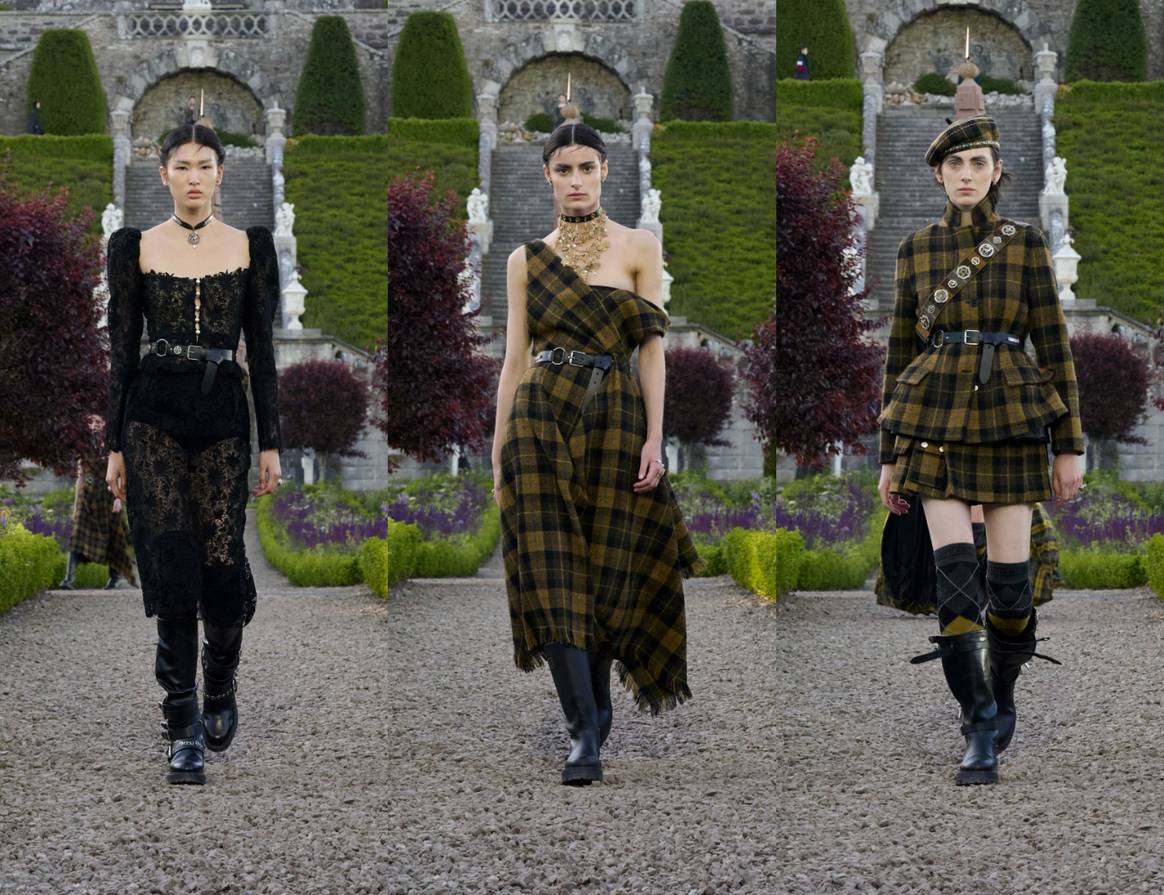
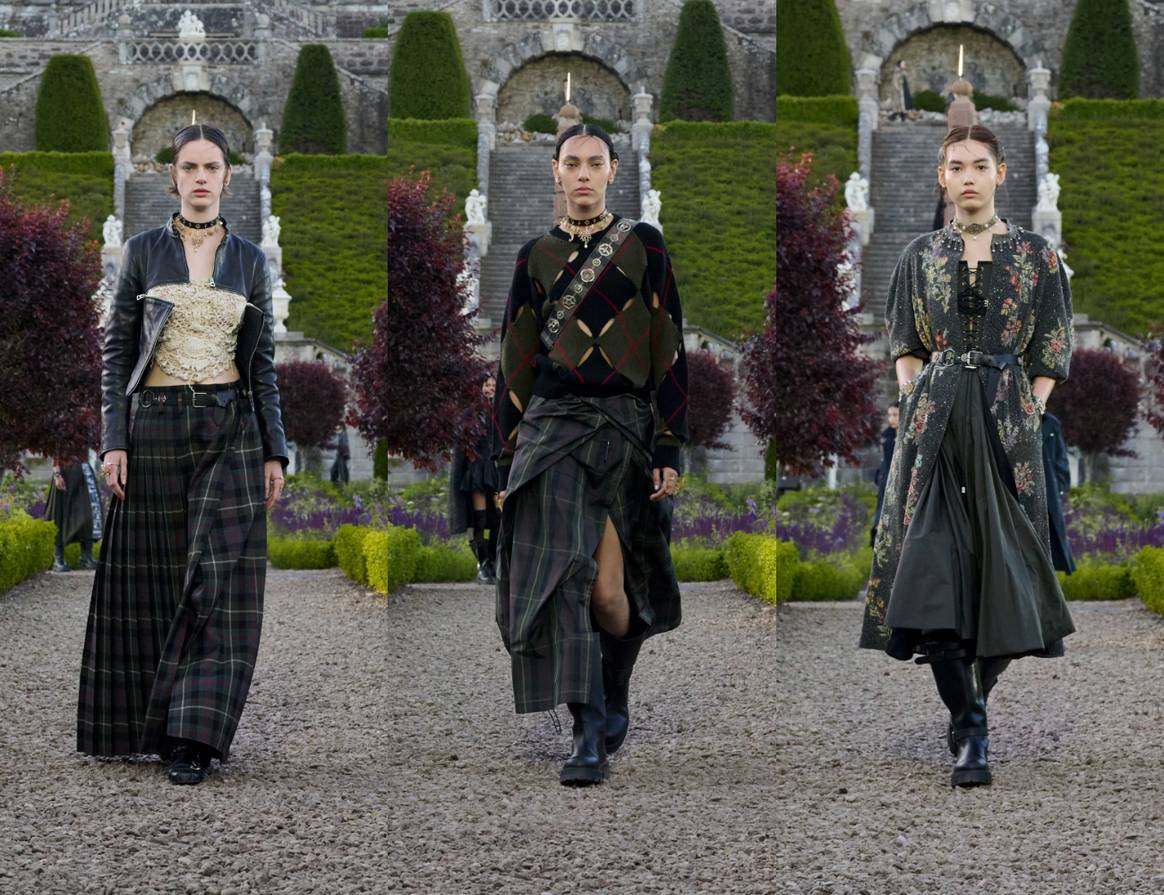
The collection as a whole also tells a story. The opening looks are heavy on the tartan, which acts as a common thread in what seemingly appears to be a celebration of the Scottish kilt. The traditional uniform comes in varying forms, from more classic shapes to corseted iterations that are sculpted from the waist, while the pattern also serves as a staple for deconstructed gowns, heartily gathered skirts and an array of co-ords.
A choreography made up of ‘interconnected affinities’
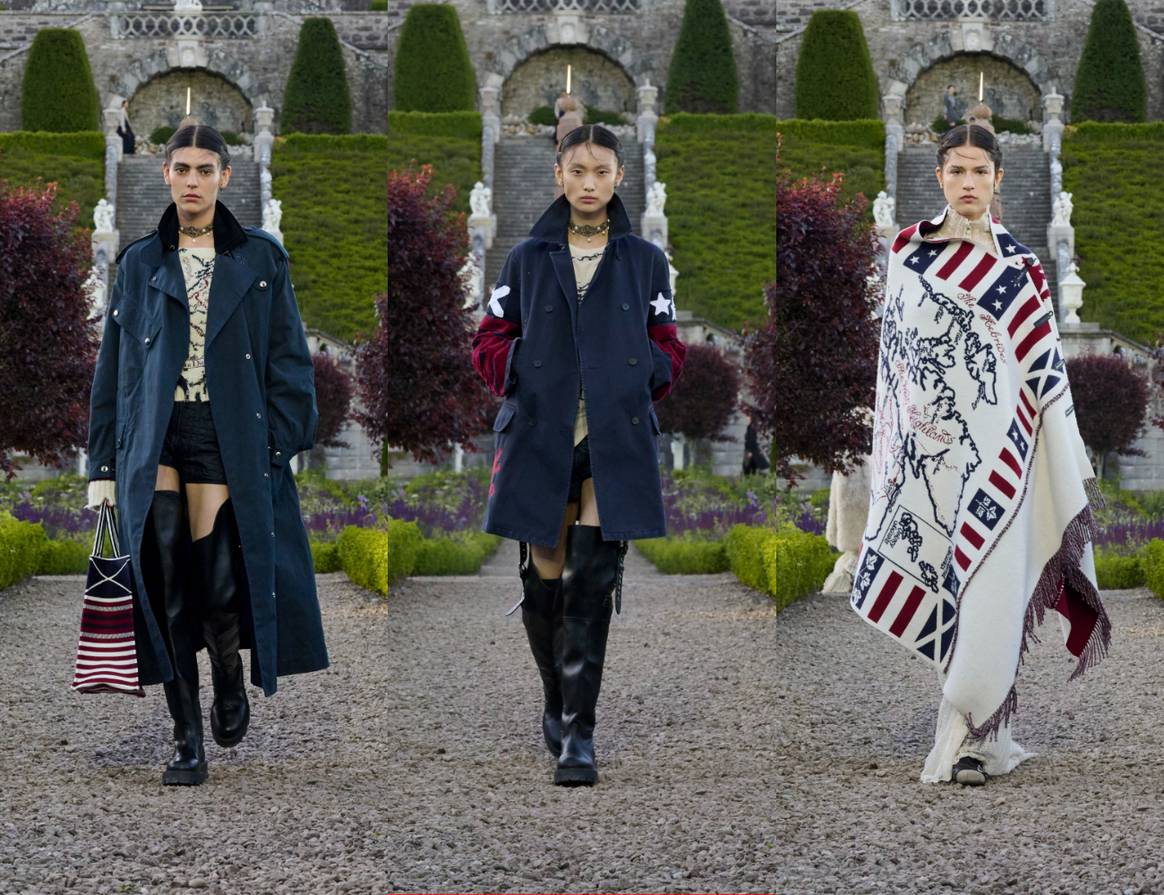
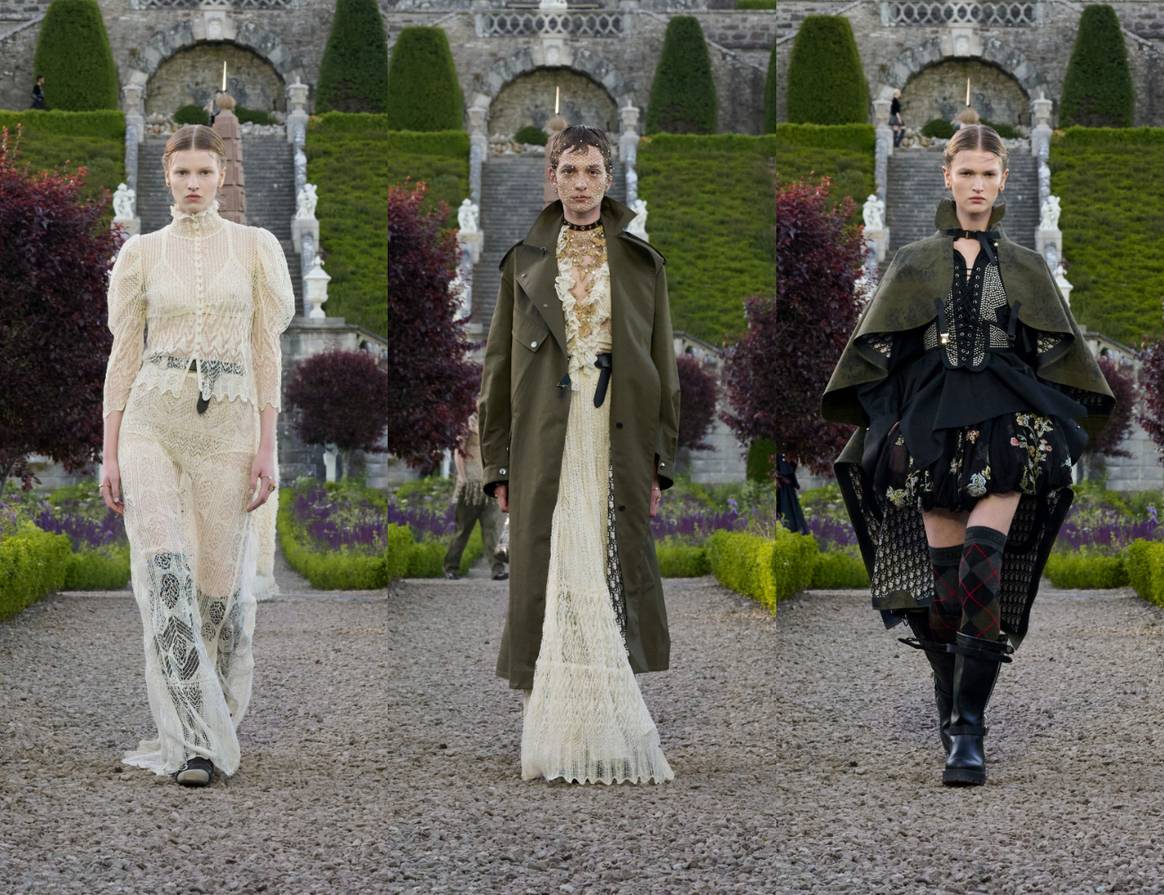
Pieces slowly begin to trickle on into a combination of classic outerwear, like trench coats and capes, that contradict the appearance of casualised evening wear, where the emergence of lace and velvet brings forth a more Dior-esque appearance defined as “contemporary equestrian”, straying from the punky looks seen prior. These in turn progress into heavily embellished garments that take on the characteristics of armour, once again drawing on the Queen of Scots’ reign which came at a time of great political unrest.
The collection’s finale is contoured by gowns that are intrinsically Dior: sheer, embroidered and lace numbers that have remained a mainstay of the house’s cruise collections for decades. As such, the house fittingly concludes: “This inventive choreography is made up of interconnected affinities. Like a testimony revisiting stories of earlier times, it offers a journey where the different stages become the subjects of creativity.”
